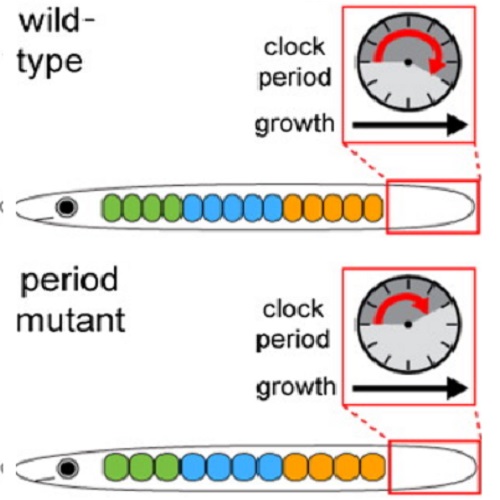Segment number and axial identity in a segmentation clock period mutant.
A species-specific number of segments is a hallmark of the vertebrate body plan. The first segmental structures in the vertebrate embryo are the somites, which bud sequentially from the growing presomitic mesoderm (PSM). The Clock and Wavefront model for somitogenesis proposes that the total number of somites is determined by the period of an oscillator or clock operating in the PSM and the total duration of PSM growth. Furthermore, the number of oscillations of the segmentation clock has been suggested to regulate the regional identity of segments along the body axis. Here we test these two ideas in a zebrafish mutant in which the segmentation clock is specifically slowed. This reduces segment number as predicted, but hox gene expression and posterior anatomical markers align with lower segmental counts in mutants compared to the wild-type, arguing against an instructive role of the segmentation clock in determining axial identities. Our data therefore suggest that precise control of segmentation clock period in relation to axial growth ensures a species-specific segment number and that during evolution modulating the clock's period through genetic mutations may have been a relevant way to vary segment number independently of axial regionalization.

- Curr. Biol. 2010 Jul 27;20(14):1254-8
- 2010
- Developmental Biology
- 20637625
- PubMed
Enabled by:
